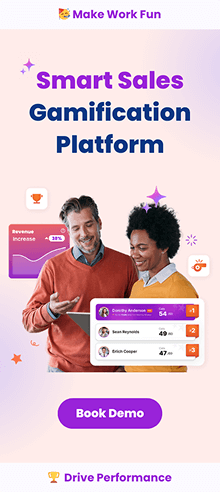You’ve got a great product, and now it’s time for the world to see it. The easiest way to do it is with a rock-solid sales funnel. But in order to optimize your funnel to perfection, you need to set and track the right KPIs. In this article, we’re going to show you the 10 most important sales funnel KPIs and metrics for SaaS businesses.
It’s time to rock the socks off your audience!
1. Is Churn the Most Important SaaS Sales Funnel Metric?
It may well be, especially if you’re just starting out.
However, churn isn’t all that bad. It can alert you to the longevity of your products, and drop-off points you can improve.
When you make churn one of your most important KPIs, you’ll be able to understand your customers a lot more.
But in addition to letting that reflect on your sales, you should also let it reflect on your product development.
Typically, churn comes in the final stage of your sales funnel – retention.
However, if you’re offering free trials, then churn should be your number one priority.
If you have a freemium plan, pay particular attention to drop-off points in which the customers either stop using your product or decline paid plan subscriptions repeatedly.
2. Let’s Talk Leads
Leads are the lifeblood of any sales funnel.
If you’re getting a steady amount of leads, you’ll always have fresh prospects who are going to be enamored with your product.
The most important things you should track when tracking leads are:
- Lead numbers (How many leads do you have?)
- Qualified lead numbers (How many leads have the right
budget, permission level, and need your solution right now?) - Lead sources (Where are your leads coming from?)
- Lead velocity rates (How much is the number of your qualified leads growing from month to month?)
- Marketing-qualified leads (How many leads are you getting from marketing activities like ad campaigns?)
- Sales-qualified leads (How many leads are you getting from sales activities like cold calls and social selling?)
3. Conversion
While there are many types of conversions when we’re talking about sales funnels, the most important conversion is the one that turns you lead into a paying customer.
The formula is simple:
(Won deals / Leads) * 100
It should also show you how effective your sales funnel is, and how accurately you’re qualifying leads.
Your conversion rate can say a great many things about your sales process. It’s an indispensable metric to track.
You can also track conversions from the funnel stage to stage.
For example, how many leads turn into sales qualified leads? How many SQLs turn into prospects who are given opportunities? How many end up becoming your customers?
The conversion rates for each stage can point you to areas for optimization. Keep an eye on them, as well.
4. Sales Velocity
You want sales and you want them now. However, in order to speed up the process, you need to understand your sales velocity first.
To put it simply: sales velocity tells you how fast you’re making money by defining how fast your leads are turning into customers.
In order to calculate your sales velocity, you can use the following formula:
(The number of leads x average deal size x conversion rate) / Average conversion time
Keep in mind that not all sales cycles have the same length.
Sometimes your prospects just need more time and education. However, you can streamline that with good marketing and retargeting, which is why cross-departmental collaboration pays off.
5. Lead Acquisition and Customer Acquisition Costs
The majority of KPIs you should track in your SaaS business focus on generating revenue.
However, you could still not be making a profit if you’re spending too much on LAC (lead acquisition costs) or CAC (customer acquisition costs).
You can get your LAC by dividing your total acquisition cost by the number of leads.
Similarly, you can get your CAC by dividing your total acquisition cost by the number of customers.
However, SaaS products typically have a longer shelf life than your average product.
This is why you have to factor in the lifetime value of your customers.
If you spend $50 on marketing, advertising, and sales nurturing to get a customer that’s going to give you $10,000 within a year, it’s not a lot, even if it may seem like it from your CAC and LAC.
Remember context matters.
6. Customer Lifetime Value
Another incredibly important metric to track in SaaS is your customer lifetime value.
To put it simply: how much money are your customers going to bring you over time?
This is especially important if your goal is to up-sell or cross-sell them, and your product lends itself to that purpose.
In order to calculate your LTV, you have to calculate the average revenue per account (ARPA) first.
Then, you can use the following formula:
LTV = (ARPA x Gross Margin) / Churn Rate
7. Lead Velocity Rate
SaaS sales funnels are all about velocity, and it’s an important factor when it comes to leads, as well.
In order to forecast your MRR (monthly recurring revenue), you’re going to need to know how many leads you’re going to be getting with each month, and how many leads are going to convert.
Keep in mind that LVR pertains to qualified leads.
You can calculate it with the following formula:
LVR = (Qualified Leads Current Month – Qualified Leads Previous Month) / (Qualified Leads Previous Month) * 100
8. Monthly Recurring Revenue
Every sales team has targets to meet.
And when we’re talking about SaaS, we typically talk about MRR – Monthly Recurring Revenue.
You can get your MRR just by looking at how much revenue you’re earning in a single month.
9. Annual Recurring Revenue
When you have your MRR, you can simply calculate your ARR by multiplying MRR by twelve (months).
While this seems obvious on paper, recurring revenue starts being more important when you use it to…
10. Motivate Sales Reps with the Right KPIs
There are KPIs that matter to your company, and then there are KPIs that matter to your sales reps.
You can focus on ARR, but you should help your reps maximize their productivity by setting KPIs that track and reward them for day-to-day engagement.
For example, you can track the number of sales activities they’ve performed.
And if you’re using Spinify, you can gamify sales rep engagement and close more deals than you’ve ever imagined!
Track SaaS KPIs with Spinify
Not all sales dashboards are made equal.
Spinify’s sales dashboard is going to help you:
- Motivate your reps
- Track the most important metrics
- Celebrate successes (and keep them coming)
All at the same time!
Motivate your team , learn from the success stories of our customers, and step into the new era of sales.
Check out our social media pages for Spinify news and updates: LinkedIn & Twitter



